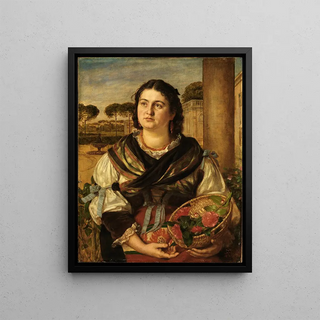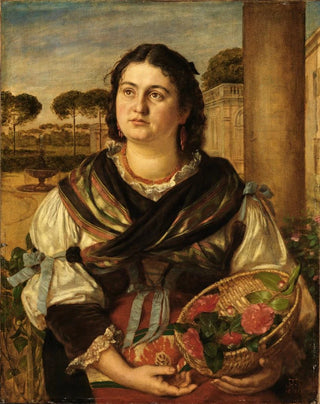Art print | The Gardener - Hans Thoma


View from behind

Frame (optional)
In the vibrant universe of art, some works manage to capture the very essence of nature and daily life with such delicacy that they transcend time. "The Gardener - Hans Thoma" is one of these creations. This painting, imbued with a peaceful atmosphere, invites the viewer to immerse themselves in a world where the simplicity of gardening becomes a celebration of existence. The scene depicts a gardener in full action, surrounded by lush vegetation, illustrating the intimate connection between man and earth. Through this artwork, Thoma succeeds in evoking a deep serenity, a communion with nature that still resonates today.
Style and uniqueness of the work
Hans Thoma's style is distinguished by its ability to blend realism with a certain visual poetry. "The Gardener" perfectly illustrates this approach, where every detail is carefully considered. The color palette, soft and harmonious, evokes the warmth of sunny days, while light plays a crucial role in the composition, emphasizing shapes and textures. The gardener, the central figure of the piece, is depicted with meticulous attention, his gestures imbued with grace and devotion. The plants surrounding him are not mere decorative elements; they become protagonists in their own right, testament to the richness and diversity of the plant world. This painting does not merely depict a gardening scene; it makes it a true ode to nature, to the beauty of simple things, and to the joy of well-done work.
The artist and his influence
Hans Thoma, born in 1839 in Germany, is often regarded as one of the great masters of the 19th-century German artistic movement. His career, marked by various influences ranging from Romanticism to Symbolism, reflects a constant quest for harmony and beauty. Thoma draws inspiration from rural life and natural landscapes, seeking to translate into his works the depth of human experience. His commitment to authentic representation of nature and everyday characters has left a lasting imprint on the art world. Through "The Gardener," he manages to convey

Matte finish

View from behind

Frame (optional)
In the vibrant universe of art, some works manage to capture the very essence of nature and daily life with such delicacy that they transcend time. "The Gardener - Hans Thoma" is one of these creations. This painting, imbued with a peaceful atmosphere, invites the viewer to immerse themselves in a world where the simplicity of gardening becomes a celebration of existence. The scene depicts a gardener in full action, surrounded by lush vegetation, illustrating the intimate connection between man and earth. Through this artwork, Thoma succeeds in evoking a deep serenity, a communion with nature that still resonates today.
Style and uniqueness of the work
Hans Thoma's style is distinguished by its ability to blend realism with a certain visual poetry. "The Gardener" perfectly illustrates this approach, where every detail is carefully considered. The color palette, soft and harmonious, evokes the warmth of sunny days, while light plays a crucial role in the composition, emphasizing shapes and textures. The gardener, the central figure of the piece, is depicted with meticulous attention, his gestures imbued with grace and devotion. The plants surrounding him are not mere decorative elements; they become protagonists in their own right, testament to the richness and diversity of the plant world. This painting does not merely depict a gardening scene; it makes it a true ode to nature, to the beauty of simple things, and to the joy of well-done work.
The artist and his influence
Hans Thoma, born in 1839 in Germany, is often regarded as one of the great masters of the 19th-century German artistic movement. His career, marked by various influences ranging from Romanticism to Symbolism, reflects a constant quest for harmony and beauty. Thoma draws inspiration from rural life and natural landscapes, seeking to translate into his works the depth of human experience. His commitment to authentic representation of nature and everyday characters has left a lasting imprint on the art world. Through "The Gardener," he manages to convey






